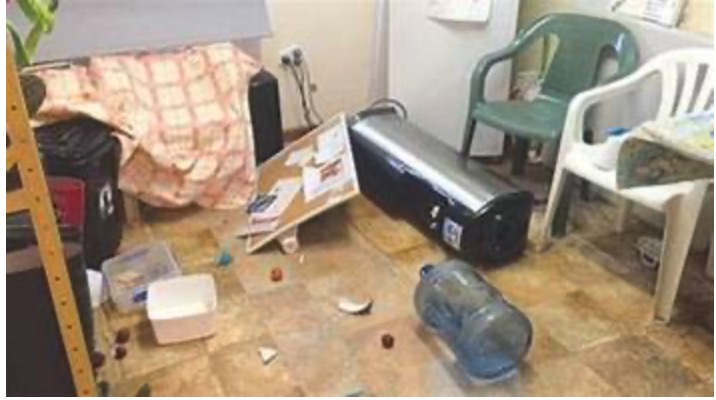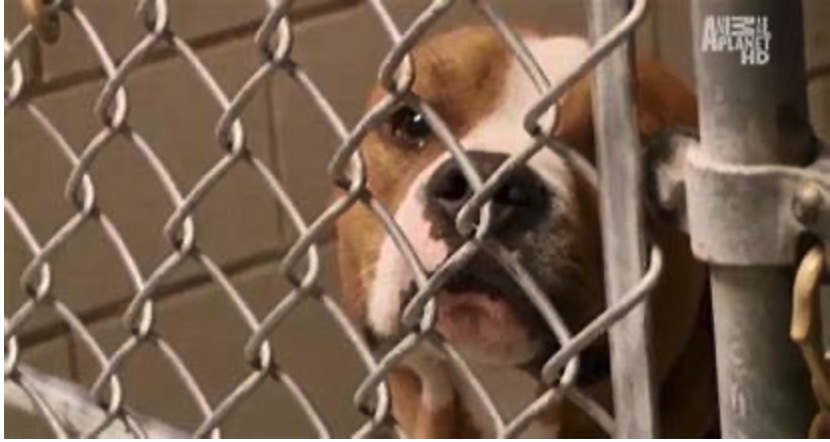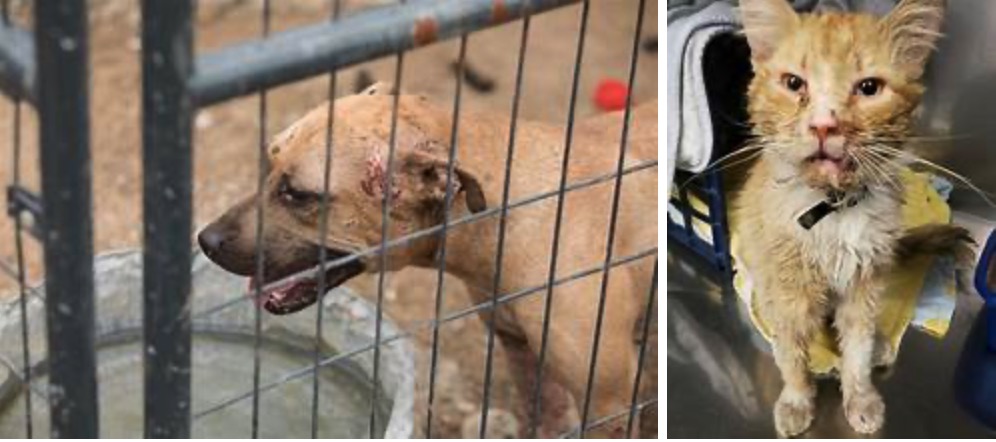Comments
ANIMAL WATCH - Los Angeles Animal Services’ website information on dogs available today at its six public shelters showed that 19 of the first 24 were adult Pit Bulls or Pit Bull-mixes, and the shelters’ dog capacity is currently at 205%. The banner that pops up states, “Each day, JUST ONE MORE dog enters the shelter than leaves it.” With that prognostication, it hardly seems like a good time to cut staffing! Perhaps the Council should first re-evaluate the Department’s management!
The cat-adoption page states there are 566 cats available, which is approximately 94 per shelter However, the first page shows only photos of six terrified, ill or just-weaned kittens and one adult female cat—the rest of the photo windows state, “No photo available.”
With that large a population and the cost of the contract for the website, which was guaranteed to increase adoptions and bring in large donations, we would hope that the situation at LAAS would be getting better than its own forecast.
BASIC SHELTER TERROR FOR DOGS, CATS AND RABBITS

Leaving the shelters without human presence and animals –many of which have been family pets--without protection and care at night in an overcrowded shelter is a deplorably cruel concept on its own; however, cats are at least almost always given a private cage with a cubby around them when they sleep. They, like rabbits and small prey animals, need a place to hide and to be kept far enough from dog kennels so that the sounds and smells do not cause them to live in constant fear of attack.
However, night is also a time when shelter dogs become possessive of their territory and anxious about their safety because, with the overcrowded conditions, they cannot protect themselves while sleeping, and there will always be at least one strange dog with them or in a cage close enough to threaten them. Keeping any animal on edge worrying about guarding itself is cruel and a recipe for fights to death—especially with large breed dogs.
VANDALISM WILL BE RAMPANT IF EMPLOYEES ARE REMOVED FROM NIGHT SHIFT

It is the responsibility of the City to provide security for its facilities—whether by LA Police Department or a private guard service. A deliberate endangerment of animals and City property should never be an acceptable possibility at a government building.
Although LAPD will respond to investigate suspicious activity around the shelter, L.A. Animal Services should have its own employees on a site where live animals are being kept, especially a large number of Pit Bulls, which can be stolen and used for fighting.
See: Pit Bulls Rescued from New Jersey Dog Fighting Ring Stolen from Animal Shelter.
New-GM Staycee Dains should haVE a plan. On January 9, 2024, she proposed to the City Council that the two night shelter Animal Care Technicians, who routinely feed the animals, clean all the kennels twice, provide individual care to sick or injured animals, and care for animals of many species (birds, mice, rats, rabbits, snakes,and often wildlife which roam in the dark is temporarily impounded and awaiting pick-up by rescue organizations.) The night crew at an animal shelter must be the most experienced and versatile of all staffing. They are called into the field to help because of reduced animal control officer staffing, especially when numerous animals are impounded.
SICK, PREGNANT, WHELPING ANIMALS, NURSING MOMS, PUPPIES AND KITTENS NEED NIGHT CARE

Also, there must be experienced personnel to render first aid for injuries and transport animals to veterinarians for care in emergencies.
DOG FIGHTING IS INEVITABLE

In such cramped housing as the misery of “No Kill” shelters, dog fighting is inevitable. Even dogs that seemingly can be housed together, including multiples of small dogs, can experience a turn in behavior to a vicIous attack on the weakest or one that becomes distressed and starts crying (it is a basic instinct of dogs to kill any member of a pack that makes noise which might scare away prey.)
Therefore, a small fight in one area of these packed kennels and buildings, can arouse mating or survival instincts in numerous others and result in rampant attacks in kennels on innocent victims.
During the day, there are distractions; but many dogs are spurred to combat by any perceived opportunity to compete. One of these, which is possibly the most dangerous, is the presence of unspayed females which are in kennels or cages in proximity to where unneutered males are kept in multiples. This is a recipe for a fight to death.
Personnel at night in overcrowded shelters are working constantly to avoid serious injury or damage to these animals and to themselves. How many will die if no one is there to intercede?
(Management knows this. Two women are in charge of LAAS, Staycee Dains, a former shelter manager, and Annette Ramirez, Asst. GM and former GM of L.A. Animal Services on a temporary basis. Both know that the absence of personnel will result in fights, often with fatal injuries—and that is not acceptable.
CARING FOR THE INJURED

GM Dains came from the very small Long Beach City shelter, which houses only approximately 320 animals—far less than even one of L.A.’s diverse and complicated needs.
The majority of injuries to animal control employees have always occurred because of a lack of staffing.
DAY SHIFT AT LAAS SHELTERS – CAN IT DO THE WORK OF TWO SHIFTS?
The day shift at an LAAS animal shelter must come in to a fairly clean shelter with the animals fed and the kennels reasonably clean and free of urine, feces and diarrhea (common in shelters due to the change in food and the stress, and occasionally disease) so that they can promptly greet what is often a line of potential adopters or those planning to relinquish an unwanted animal or stray.
They need to have time to explain where someone should look for their lost dog and/or , if not impounded, what to do to make finding it more likely. They need to answer phones and questions about licensing and rules for keeping animals and basic care, in addition to being familiar with laws regarding domestic animals and wildlife.
There is no cost-analysis benefit from having no one on a night shift and needing to add less-experienced, at-will personnel during the day because the same amount of work or more must be done. And it is also cruel to force animals to live in their own waste and that of other animals caged with them for 12 hours or more.
Maintaining a successful animal sheltering program is not rocket science, but LAAS shelters are tax-funded public agencies and neither should they be engaged in political maneuvering with wealthy groups that use the plight of the animals to obtain donations that pay back in publicity for the donor.
Also, the City Council should not create committees of those who have worked only in the non-profit or advocacy venue to advise on the day-to-day operations of a public agency that is potentially a very dangerous and toxic environment for both employees and the animals.
If the City Council continues to play political games with this department, it will lose the trained, experienced core that is held together by their compassion and dedication to the animals about which no one else cares.
LAAS has lost some of its finest and best trained officers and shelter personnel because of mismanagement. We do not want to lose any more before they have the opportunity to pass on their knowledge, skills and compassion for the voiceless to younger workers.
NIGHT SHIFT CAN PROVIDE ON-THE-JOB TRAINING
Instead of shutting down the night staff, it should be expanded, with the dedicated providing training of new employees without the frenzy of daytime public demands, having the opportunity to assist officers and the shelter veterinary technician. Once they have spent a few months looking at and involved in the “big picture,” they will be able to better explain the responsibility of adoption and pet ownership and how to help stray animals and wildlife when they return to stressful daytime demands.
The necessity for retaining the night shift was reinforced by the actions of the Council in 2015; and that analysis should be reviewed (see below). If the General Manager believes the benefits of this shift do not match the cost, she should be able to articulate exactly why and whether it is the employees or the lack of support that is undermining effectiveness. Is she regularly appearing during the evenings or at midnight to evaluate the duties being performed and how her operation would be affected without this assistance?
Should the one Animal Control Officer on duty not have any backup for a serious and/or multi-faceted call; such as, an overturned transport truck of slaughter animals or a dog pack or wildlife running on the freeway, endangering their own and drivers’ safety?. Other agencies may handle the traffic flow but who else can help the animals?
In a City where billions of dollars has been spent on homeless humans with little effect or success, homeless animals in need should not be added to this failure and suffer further neglect by the only entity that can--and has the legal obligation to--help them.
Ex-GM BRENDA BARNETTE PROPOSED THE SAME BAD IDEA IN 2013
Staycee Dains is merely repeating an effort by then-GM Brenda Barnette in 2013, and it was quickly thwarted by Councilman Paul Koretzwhen he realized what was being attempted and that the following petition was being circulated:
Petition · Stop the implementation of "No Night Care for Animals ...
“Brenda Barnette, the General Manager of Los Angeles' Animal Services has decided to implement a ridiculous move to take all Animal Care Technicians off. . ."
This was a bad idea in 2013 and it is a bad idea NOW!
(Phyllis M. Daugherty is a former Los Angeles City employee, an animal activist and a contributor to CityWatch.)






